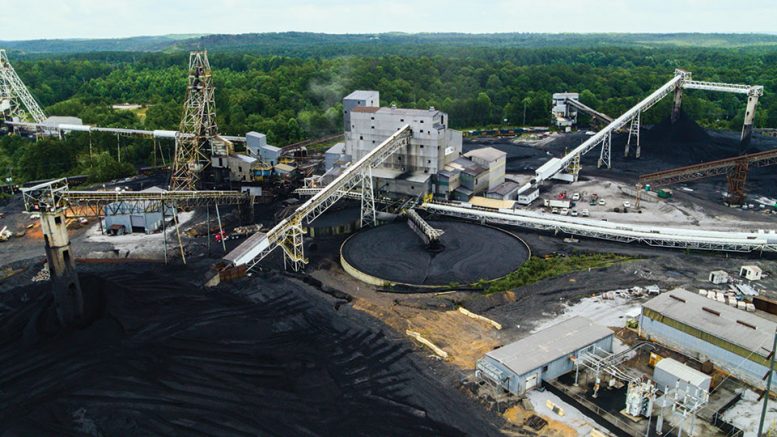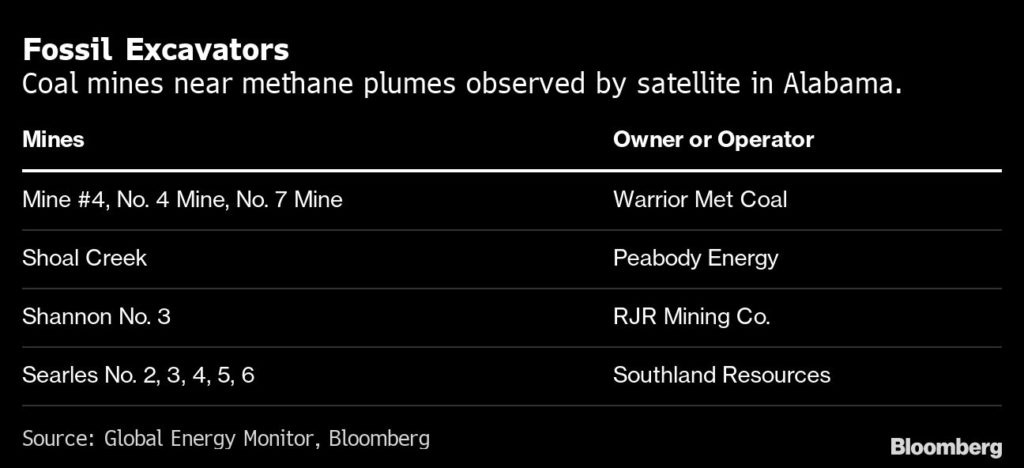
Powerful clouds of the greenhouse gas methane have been observed by satellite near a coal-mining basin in Alabama, highlighting an often overlooked climate impact from the dirtiest fossil fuel.
Since mid-February at least three plumes were observed by the European Space Agency’s Sentinel-5P satellite that originated near the Black Warrior Basin, according to an analysis of the data from Kayrros SAS. The plumes could have been generated by multiple sources, the geoanalytics firm said.
The estimated locations for each of the releases were within 12.4 miles (20 kilometers) of five mines or mine clusters owned or operated by Warrior Met Coal Inc., RJR Mining Co. and Southland Resources, according to location and ownership data in Global Energy Monitor’s coal mine database. Another mine owned by Peabody Energy Corp. was within about 12 miles of two of the plumes.

Methane, the primary component of natural gas, can be released from the ground during mining when rock strata or coal seams are fractured. The greenhouse gas traps 84 times more heat than carbon dioxide during its first two decades in the atmosphere, and halting its intentional release during the production and transport of fossil fuels is viewed by scientists as some of the lowest hanging fruit in the fight against a warming planet.
Northern Alabama has active coal, gas and oil production. Satellite observations over the region since January 2019 show dozens of releases of the super-potent gas. The state’s Department of Environmental Management said it did not appear there were any pipeline leaks in the areas on the dates of the observations and there were no reported issues from mines that would have resulted in the releases.
Warrior Met Coal said it publicly discloses mandatory greenhouse gas emissions reporting and said it wasn’t aware of any activities that would have caused abnormal emissions from its mines. No one answered a phone number listed online for RJR Mining, and Southland Resources didn’t respond to an email seeking comment. Peabody said it hasn’t encountered any methane pockets that would cause a release.
At least one of the recent plumes was identified within about 10 miles of a pipeline owned by Southern Natural Gas, although the wind direction at the time wasn’t consistent with a release coming from the line, according to Kayrros. A spokeswoman for Southern Natural Gas’s parent company, Kinder Morgan Inc., said its operations didn’t cause the release.
More methane is emitted from coal mines globally than either oil or gas, according to analysis released this month by the non-profit Global Energy Monitor, which determined that emissions of the gas from coal mines fall 11% each year for the rest of the decade to maintain a transition pathway that avoids the worst of climate change, according to the report.
Coal mines can continue emitting methane for years after they are closed or abandoned if they aren’t sealed once production has ceased. There’s been active coal mining began in Alabama for more than a century.
(By Francesca Maglione)
Comments